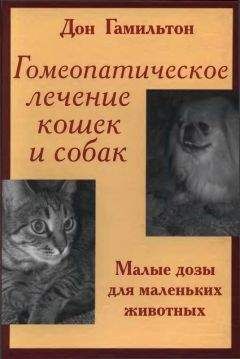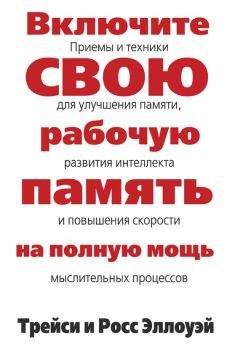Питер Уорд - Новая история происхождения жизни на Земле
168
«End-Permian Extinction Happened in 60,000 Years — Much Faster than Earlier Estimates, Study Says,» Phys. org, February 10, 2014. S. D. Burgess et al., «High-Precision Timeline for Earths Most Severe Extinction,» Proceedings of the National Academy of Sciences 111, no. 9 (2014): 3316–21.
169
L. Becker et al., «Impact Event at the Permian-Triassic Boundary: Evidence from Extraterrestrial Noble Gases in Fullerenes,» Science 291 (2001): 1530–33.
170
L. Becker et al., «Bedout: A Possible End-Permian Impact Crater Offshore of Northwestern Australia,» Science 304 (2004): 1469–76.
171
K. Grice et al., «Photic Zone Euxinia During the Permian-Triassic Superanoxic Event,» Science 307 (2005): 706–09.
172
C. Cao et al., «Biogeochemical Evidence for Euxinic Oceans and Ecological Disturbance Presaging the End-Permian Mass Extinction Event,» Earth and Planetary Science Letters 281 (2009): 188–201.
173
L. R. Kump and M. A. Arthur, «Inteqireting Carbon-Isotope Excursions: Carbonates and Organic Matter,» Chemical Geology 161 (1999): 181–98.
174
K. M. Meyer and L. R. Kump, «Oceanic Euxinia in Earth History: Causes and Consequences,» Annual Review of Earth and Planetary Sciences 36 (2008): 251–88.
175
T. J. Algeo and E. D. Ingall, «Sedimentary Corg: P Ratios, Paleoceanography, Ventilation, and Phanerozoic Atmospheric pO2» Palaeogeography, Palaeoclimatology, Palaeoecology 256 (2007): 130–55; C. Wingudi and A. M. E. Winguth, «Simulating Permian-Triassic Oceanic Anoxia Distribution: Implications for Species Extinction and Recovery,» Geology 40 (2012): 127–30; S. Xie et al., «Changes in the Global Carbon Cycle Occurred as Two Episodes during the Permian-Triassic Crisis,» Geology 35 (2007): 1083–86; S. Xie et al., «Two Episodes of Microbial Change Coupled with Permo-Triassic Faunal Mass Extinction,» Nature 434 (2005): 494–97; G. Luo et al., «Stepwise and Large-Magnitude Negative Shift in d13Ccarb Preceded the Main Marine Mass Extinction oldie Permian-Triassic Crisis Interval,» Palaeogeography, Palaeoclimatology, Palaeoecology 299 (2011): 70–82; G. A. Brenneeka et al., «Rapid Expansion of Oceanic Anoxia Immediately before the End-Permian Mass Extinction,» Proceedings of the National Academy of Sciences 108 (2011): 17 631-34.
176
P. Ward et al., «Abrupt and Gradual Extinction Among Late Permian Land Vertebrates in the Karoo Basin, South Africa,» Science 307 (2005): 709–14; C. Sidor et al., «Permian Tetrapods from the Sahara Show Climate-Controlled Endemism in Pangaea»; S. Sahney and M. J. Benton, «Recovery from the Most Profound Mass Extinction of All Time».
177
R. B. Huey and P. D. Ward, «Hypoxia, Global Warming, and Terrestrial Late Permian Extinctions,» Science, 308, no. 5720 (2005): 398–401.
178
P. Ward et al., «Abrupt and Gradual Extinction Among Late Permian Land Vertebrates in the Karoo Basin, South Africa».
179
Высокие температуры в нижних слоях атмосферы триасового периода — основное доказательство того, что предположение о «парниковом массовом вымирании» верно.
180
S. Schoepfer et al., «Cessation of a Productive Coastal Upwelling System in the Panthalassic Ocean at the Permian-Triassic Boundary,» Palaeogeography, Palaeoclimatology, Palaeoecology 313–14 (2012): 181–88.
181
История коралловых рифов рассматривалась нами в главе, посвященной ордовикскому периоду. По этому вопросу наш главный эксперт — Джордж Стэнли. G. D. Stanley Jr., ed., Paleobiology and Biology of Corals, Paleontological Society Papers, vol. 1 (Boulder, CO: The Paleontological Society, 1996). Также внимания заслуживает и другая его работа «Кораллы и рифы: Кризис, Коллапс и Перемены» (Corals and Reefs: Crises, Collapse and Change), которая была представлена в виде краткого курса лекций Палеонтологического общества на собрании Геологического сообщества Америки в Миннеаполисе, 8 октября 2011 г.
182
P. C. Sereno, «The Origin and Evolution of Dinosaurs,» Annual Review of Earth and Planetary Sciences 25 (1997): 435–89; P. C. Sereno et al., «Primitive Dinosaur Skeleton from Argentina and the Early Evolution of Dinosauria,» Nature 361 (1993): 64–66; P. C. Sereno and A. B. Arcucci, «Dinosaurian Precursors from the Middle Triassie of Argentina: Lagerpeton chanarensis,» Journal of Vertebrate Paleontology 13 (1994): 385–99. Другие важные работы о ранних динозаврах и эволюции прочих позвоночных: M. J. Benton, «Dinosaur Success in the Triassie: A Noncompetitive Ecological Model,» Quarterly Review of Biology 58 (1983): 29–55; M. J. Benton, «The Origin of the Dinosaurs,» in C. A.-P Salense, ed., Ill Jomadas Internacionales sobre Paleontologta de Dinosaurios у su Entorno (Burgos, Spain: Salas de los Infantes, 2006), 11–19; A. P. Hunt et al., «Late Triassie Dinosaurs from the Western United States,» Geobios 31 (1998): 511–31; R. B. Trims et al., «A Late Triassie Dinosauromorph Assemblage from New Mexico and the Rise of Dinosaurs,» Science 317 (2007): 358–61; R. B. Irmis et al., «Early Ornithischian Dinosaurs: The Triassie Record,» Historical Biology 19 (2007): 3–22: S. J. Nesbitt et al., «A Critical Re-evaluation of the Late Triassie Dinosaur Taxa of North America,» Journal of Systematic Paleontology 5 (2007): 209–43; 8. J. Nesbitt et al., «Ecologically Distinct Dinosaurian Sister Group Shows Early Diversification of Omithodira,» Nature 464 (2010): 95–98.
183
D. R. Carrier, «The Evolution of Locomotor Stamina in Tetrapods: Circumventing a Mechanical Constraint,» Paleobiology 13 (1987): 326–41.
184
E. Schachner, R. Cieri, J. Butler, G. Farmer, «Unidirectional Pulmonary Airflow Patterns in the Savannah Monitor Lizard,» Nature 506, no. 7488 (2013): 367–70.
185
A. F. Bennett, «Exercise Performance of Reptiles,» in J. H. Jones et al., eds., Comparative Vertebrate Exercise Physiology: Phyletic Adaptations, Advances in Veterinary Science and Comparative Medicine, vol. 3 (New York; Academic Press, 1994), 113–38.
186
N. Bardet, «Stratigraphic Evidence for the Extinction of the Ichthyosaurs,» Terra Nova 4 (1992): 649–56. См. также: C. W. A. Andrews, A Descriptive Catalogue of the Marine Reptiles of the Oxford Clay. Based on the Leeds Collection in the British Museum (Natural History), London. Part II (London: 1910): 1–205, также подробный обзор по данной теме в статье: R. Motani, «The Evolution of Marine Reptiles,» Evolution: Education and Outreach 2, no. 2 (2009): 224–35.
187
P. Ward et al., «Sudden Productivity Collapse Associated with the Triassic-Jurassic Boundary Mass Extinction,» Science 292 (2001): 115–19; P. Ward et al., «Isotopic Evidence Bearing on Late Triassie Extinction Events, Queen Charlotte Islands, British Columbia, and Implications for the Duration and Cause of the Triassic-Jurassic Mass Extinction,» Earth and Planetary Science Letters 224, nos. 3–4: 589–600. Более поздняя работа об исследованиях в Неваде и на островах Хайда-Гуаи также хорошо раскрывает представления об изотопной аномалии. K. H. Williford et al., «An Extended Stable Organic Carbon Isotope Record Across the Triassic-Jurassic Boundary in the Queen Charlotte Islands, British Columbia, Canada,» Palaeogeography, Palaeoclimatology, Palaeoecology 244, nos. 1–4 (2006): 290–96.
188
P. E. Olsen et al., «Ascent of Dinosaurs Linked to an Iridium Anomaly at the Triassic-Jurassic Boundary,» Science 296, no. 5571 (2002): 1305–07.
189
J. P. Hodych and G. R. Dunning, «Did the Manicougan Impact Trigger End-of-Triassic Mass Extinction?» Geology 20, no. 1 (1992): 51–54; L. H. Tanner et al., «Assessing the Record and Causes of Late Triassic Extinctions,» Earth-Science Reviews 65, nos. 1–2 (2004): 103–39; J.-H. Whiteside et al., «Compound-Specific Carbon Isotopes from Earths Largest Flood Basalt Eruptions Directly Linked to the End-Triassic Mass Extinction,» Proceedings of the National Academy of Sciences 107, no. 15 (2010): 6721–25; M. H. L. Deenen et al., «A New Chronology for the End-Triassic Mass Extinction,» Earth and Planetary Science Letters 291, no. 1–4 (2010): 113–25.
190
М.: Амфора, 2006.
191
При всем уважении к Бобу Баккеру, ни один человек, изучающий динозавров, не обойдется без чудесной книги: D. B. Weishampel et al., The Dinosauria (Oakland: University of California Press, 2004). Большая, увесистая и дорогая — она по-прежнему представляет собой один из основополагающих научных трудов по теме динозавров, даже в 2014 году.
192
В данный момент есть много источников, упоминающих воздушные мешки динозавров. Боб Баккер был первым, кто обратил на них внимание, а исследование Грегори Пола расширило уже имеющиеся наблюдения.
193
D. Fastovsky and D. Weishampel, The Evolution and Extinction of the Dinosaurs (Cambridge: Cambridge University Press: 2005).
194
P. O’Connor and L. Claessens, «Basic Avian Pulmonary Design and Flow Through Ventilation in Non-Avian Theropod Dinosaurs,» Nature 436, no. 7048 (2005): 253–56. Также представлено противоположное мнение: J. A. Ruben et al., «Pulmonary Function and Metabolic Physiology of Theropod Dinosaurs,» Science 283, no. 5401 (1999): 514–16.
195
W. J. Hillenius and J. A. Ruben, «The Evolution of Endothenny in Terrestrial Vertebrates: Who? When? Why?» Physiological and Biochemical Zoology 77, no. 6 (2004): 1019–1042. Другая важная работа: G. M. Erickson et al., «Tyrannosaur Life Tables: An Example of Nonavian Dinosaur Population Biology,» Science 313, no. 5784 (2006): 213–17; A. de Ricqles et al., «On the Origin of High Growth Rates in Archosaurs and their Ancient Relatives: Complementary Histological Studies on Triassic Archosaurifonns and the Problem of a „Phylogenetic Signal“ in Bone Histology,» Annales de Paleontology 94. no. 2 (2008): 57.
196
K. Carpenter, Eggs, Nests, and Baby Dinosaurs: A Look at Dinosaur Reproduction (Bloomington: Indiana University Press, 2000.
197
R. Takashima, «Greenhouse World and the Mesozoic Ocean,» Oceanography 19, no 4 (2006): 82–92.
198
A. S. Gale, «The Cretaceous World,» in S. J. Culver and P. F. Raqson, eds., Biotic Response to Global Change: The Last 145 Million Years (Cambridge: Cambridge University Press, 2006), 4–19.
199
T. J. Bralower et al., «Dysoxic-Anoxic Episodes in the Aptian-Albian (Early Cretaceous),» in The Mesozoic Pacific: Geology, Tectonics and Volcanism, M. S. Pringle et al., eds. (Washington, D.C.: American Geophysical Union, 1993), 5–37.
200
R. T. Huber et al., «Deep-Sea Paleotemperature Record of Extreme Warmth During the Cretaceous,» Geology 30 (2002): 123–26; A. H. Jahren, «The Biogeochemical Consequences of the Mid-Cretaceous Superplume,» Journal of Geodynamics 34 (2002): 177–91; I. Jarvis et al., «Microfossil Assemblages and the Cenomanian-Turonian (Late Cretaceous) Oceanic Anoxic Event,» Cretaceous Research 9 (1988): 3–103. Гетероморфные аммониты, способные держаться на плаву, описываются в работах П. Уорда и многих его коллег. Отличное начало для изучения этой темы — Ammonoid Paleobiology, Neil Landman et al., eds. (Springer, 1996). Пространственная ориентация бакулитов (род Baculites) была выявлена при помощи восковых чучел в натуральную величину, созданных Уордом в Университете МакМастер провинции Онтарио в Канаде в 1976 г.




